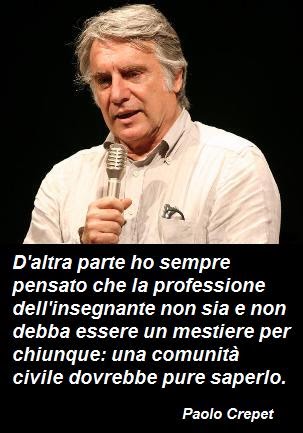20 tra i migliori Blog di Educazione Artistica americani suddivisi per livelli di scuola.
The Best General Art Education
Blogs
- School Arts Room Written by the editor of SchoolArts
Magazine, this well-organized site offers timely art news;
entertaining or thought-provoking artists, ideas, stories, and issues;
professional opportunities for you; and project and lesson ideas and exhibition
possibilities for your students.
- Teaching
for Artistic Behavior Also known as TAB, teaching for artistic behavior is a
nationally recognized choice-based art education approach to teaching
art. Choice-based art education regards students as artists and offers
them real choices for responding to their own ideas and interests through the
making of art. This site shows you how.
- Transition to Choice Based Art
Education Clyde
Gaw, author of the Indiana Art Education Advocacy Action Blog, also writes
this reflective blog on the relevance of student-directed art education.
Preschool
Art Education Blogs
- Teach Preschool While not solely art-focuessed, this blog by
Deborah Stewart holds art at the root of many of its lessons and provocations.
One of my favorite sites, hands-down.
- Casa Maria’s Creative Learning Zone Maria Wynne’s fanciful site is full of
inspiration. As she says it, “Open your eyes to all sorts of
possibilities…Discover creative ways to reuse recycled and natural
materials. ”Her pre-school curriculum and environment is deeply inspired
by The Reggio Approach to Early Childhood Education
Elementary Art Education Blogs
- Art for Small Hands Julie Voigt has taught art for over twenty-five
years in Montessori schools. Each lesson plan is self-contained with all
the information needed to complete the project: the target age; the key
concepts to be learned; the materials needed; helpful notes to avoid pitfalls;
and some anticipated conversations you may have with your young artists as they
are working.
- Elmwood Art This choice-based arts education
blog (a.k.a. TAB, Teaching for Artistic Behavior) from Hopkinton, MA is
delightful and smart!
- Art with Mr. E Ted Daniel Edinger is an elementary art teacher
in Nashville. He was named the 2011-2012 Tennessee State Elementary Art Teacher
of the Year.
- Deep Space Sparkle Founded by Patty Palmer of
Goleta, CA, this beautifully designed site is a wealth of well-organized
information.
- Thomas
Elementary Art Take
a peek at the projects that students in Dublin, OH are working on.
- Mrs.
Knight’s Smartest Artists A peek
into the busy art room of Hope Knight, art teacher and the K-5 artists at
Dolvin Elementary School, Johns Creek, Georgia, USA
- Organized Chaos Creating and teaching art requires a sense of
humor and an understanding of organized chaos – as there is no way to create
something original without spreading out supplies and getting a little messy.
- Art Teacher
Adventures Katie
Morris is a K-6 Art Teacher in two public schools and is currently exploring
choice-based art education.
- Polka Dot Spot Written by an art teacher in
Green Bay, WI.
Middle School Art Education
Blogs
- Artful Artsy
Amy Amy
teaches art in a Title I middle school in Georgia. She’s written some great
articles on classroom management. I get LOST in this site. It’s so well-written
and heartfelt. You’ll love Amy and wish she taught your child.
- Studio
Learning A
blog by Nan Hathaway of Vermont, it chronicles choice-based projects such as
sewing, painting, and felting. If you’re interested in choice-based art
education, this site will inspire you.
High School Art Education Blogs
- Panthers K-12 Well-organized lessons that
includes a syllabus, curriculum map, lesson plans, Power Points, and rubrics.
- Julia Stubbs Julia is an art and design teacher
at William de Ferrers School in Essex, UK. She shares beautifully
photographed images of her student work.
fonte: tinkerlab.com














